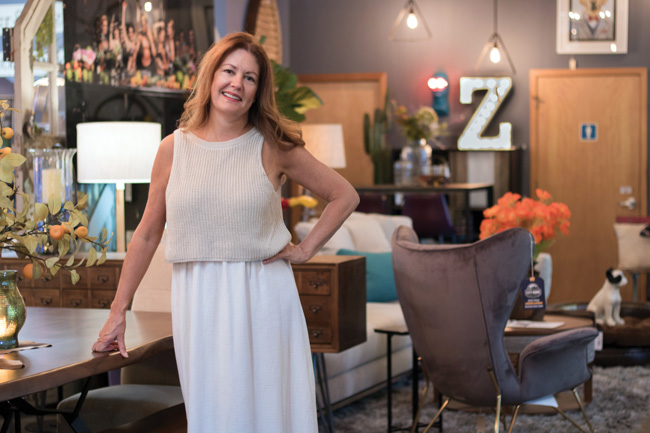
It’s time to pop the question. Is a pop-up store right for your furniture store? Kim Pellett tells all.
Home Furnishings Association member Kim Pellett continues to burnish her City Home brand across Portland, OR – just not the way most furniture retailers do business. In addition to her two permanent stores, Pellett has a pop-up store that’s been up and running for more than a year. A second pop-up is opening in August in Vancouver, WA, just across the Columbia River from Portland.
And while the pop-up stores are small – 1,000 square feet compared to Pellett’s 10,000-square-foot permanent stores – they’re doing a healthy amount of business. “I wouldn’t be opening another one if the first one wasn’t profitable,” Pellett says.
Pop-up stores are big with retailers who sell smaller items like clothing or jewelry, but where furniture is concerned, they are still something of a novelty. Fellow HFA members Colfax Furniture in Greensboro, NC, and Danto Furniture in Detroit have successfully run pop-up stores, too.
The key to running a successful pop-up store, says Pellett, is not trying to replicate your flagship store. “You want to offer a snapshot of your larger store,” she says. “Give them a taste of what your bigger store has and drive them to your front door.”
With more and more stores looking to cash in on this growing trend, here’s how retailers can go about successfully setting up a furniture pop-up shop:
Location, Location
It helps to think outside the box when planning a pop-up store. By limiting yourself only to traditional, empty brick-and-mortar buildings, you are missing out on a whole heap of potentially great spaces. Pellett says empty warehouses are great places to start. They’re perfect for displaying furniture and may be even cheaper to rent.
Think About Your Budget
Furniture retailers must think carefully about their budget, ensuring they have the means to make their vision a reality. Yes, pop-ups are normally a lower-cost, short-term option, but they still do not come cheap, particularly in major cities. Beyond the physical space, many businesses fail to consider all the additional overhead needed, like utilities, insurance, staff and marketing, when planning for their pop-up.
Marketing A Pop-Up
Marketing your pop-up is important, not just in the run-up to the event, but at every stage of the journey. To get the most out of the event, building exposure before, during and after is key, and your marketing efforts should be focused on providing the greatest impact in the limited amount of time that you have.
Read about HFA members on our Shop Talk blog: https://myhfa.org/category/shop-talk/
A feature about Home Furnishings Association's retail members, legislation affecting the furniture industry and other retail news from HFA.